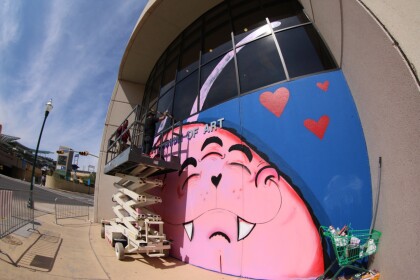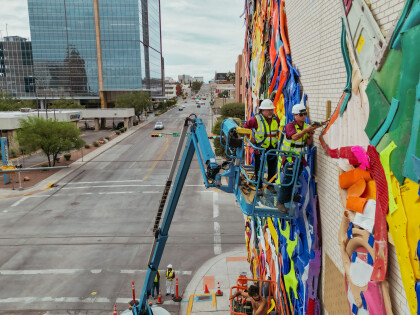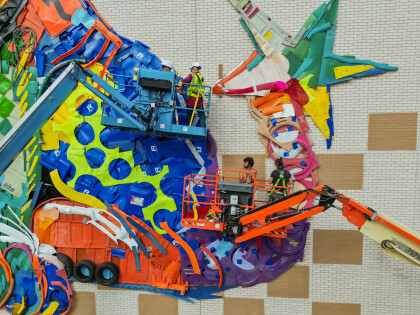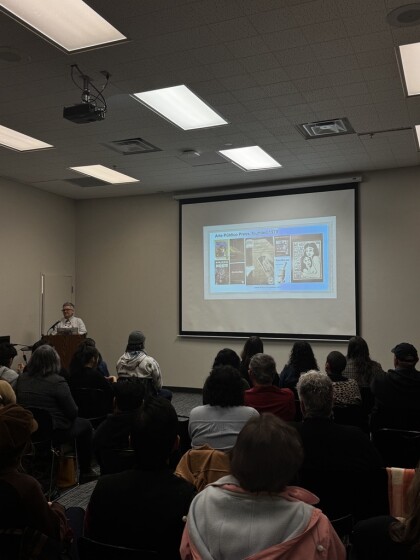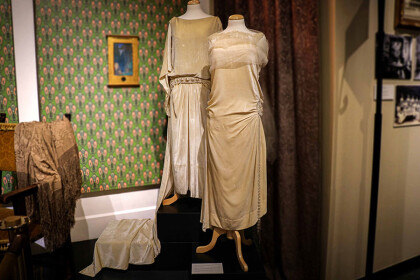San Antonio Street Around 1900
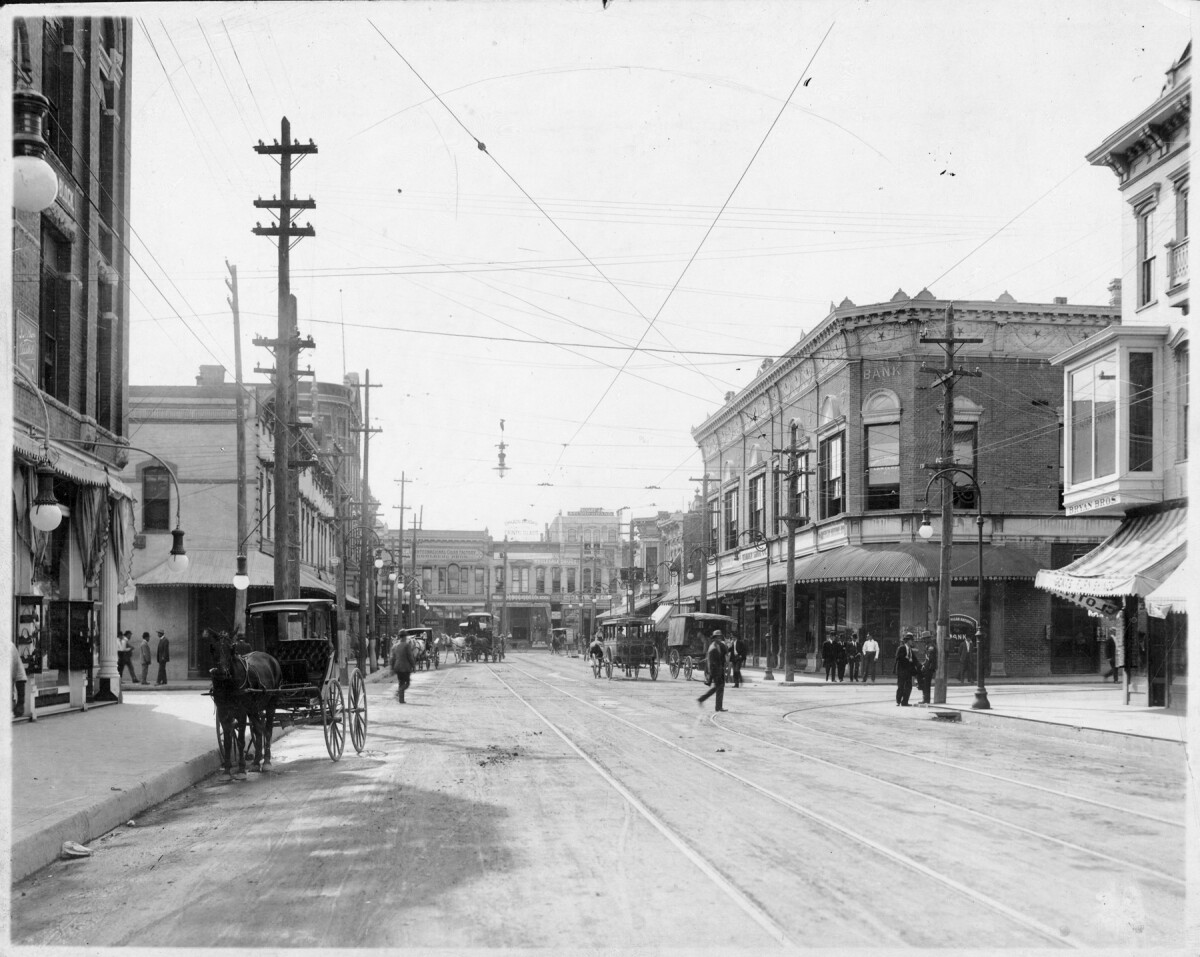
San Antonio Street Around 1900
The image shows San Antonio Street, El Paso, Texas probably in the beginning of 20th century. Coaches were still the way of transportation; no cars can be seen yet. However, the need for electricity in El Paso started around 1900, when El Paso grew from a small adobe village to a thriving city due to the arrival of the railroad in 1881. Electricity on a large scale was first used in transportation: The mule-drawn streetcar system was ended in 1900 and instead, electric cars were being used. Since then, electric streetcars did not only operate between El Paso and Juarez but routes were built in all directions; to Fort Bliss, Government Hill and to the Mesa Street route. In 1886, the first small direct generating plant had been established, providing current for a few street lights and stores. By 1890, the El Paso pioneer Zach T. White had assumed command of the electrical energy business and had new generating equipment installed at Third and Chihuahua Streets. The use of incandescent lamps began in El Paso stores and homes. Since then, electric systems grew and a larger generating plant was built (since 1910s). It supplied power not only to El Paso, but also to Juarez. El Paso Electric Railway Company was the largest electric company at that time.
Reportar esta entrada
Más sobre la misma comunidad-colección
Rubin Center IMLS Speaker Series featuring Carolina Villarroel
IMLS Speaker Series featuring Carolina Villarroel hosted by the ...
